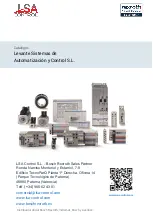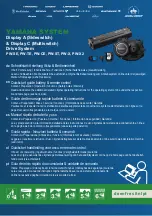
Workloads Performance & Optimizations
- 31 -
5.1.1
Workloads That Do Not Benefit From Ultrastar Memory Drive
As with any architecture, there are certain workloads that are not an ideal fit
and would not benefit from running with Ultrastar
memory drive.
Examples:
1. Workloads with low-concurrency workloads (e.g. serial workloads):
As there is only one execution thread, even though Ultrastar memory drives
can prefetch the memory, the wait-time for memory will reduce the compute
efficiency of the workload.
2. Workloads bound by memory bandwidth
As we rely on Ultrastar memory devices with bandwidth of approximately
2.2GB/s (70%R/30%W), even if four Ultrastar memory drives are installed, the
total aggregate bandwidth would be approx. 8.8GB/s. This would be much
lower than two Xeon processors memory bandwidth of >100GB/s total on
their memory controllers’ link to DRAM.
An example for that is a program constantly accessing memory and doing
little compute on the fetched memory before moving over to consume new
memory.
3. Workloads with a high frequency of system calls may suffer from virtualization
overhead (Ultrastar memory drives uses Intel Virtualization Technology).
5.2
Optimized Workload Settings
This section lists generic recommendations for software stack setup in an
environment using Ultrastar memory drive. Western Digital may publish application-
specific execution and configuration guidelines; consult the support library for the
same.
5.2.1
Operating System
1. Western Digital recommends using recent builds of supported popular Linux
distributions (or clones) such as Red Hat® Enterprise Linux® 7.x/CentOS 7.x or
SLES 12.x, at the time of writing this manual.
2. Ultrastar memory drives also support Open Source hypervisors such as KVM,
as shipped with the major Linux distributions.















































